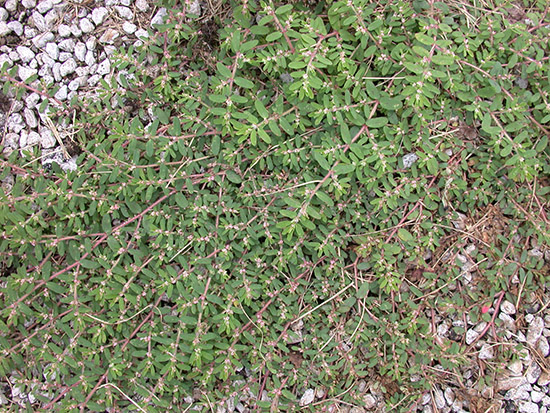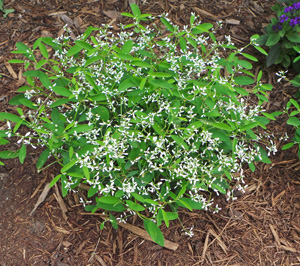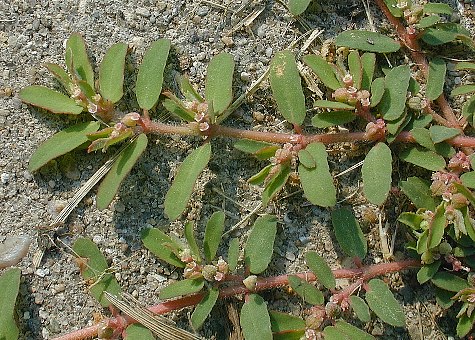How To Get Rid Of Prostrate Spurge
Prostrate spurge (also known as creeping spurge or spotted spurge) is a common weed that can be found in lawns, gardens, and other areas. It is a low-growing plant with smooth, green leaves and small, yellow flowers. Prostrate spurge can spread rapidly by seed and by creeping stems, making it difficult to control.
If you have prostrate spurge in your yard, there are a few things you can do to get rid of it.
1. Hand-pulling
If you have a small patch of prostrate spurge, you can try hand-pulling it. Be sure to get the entire root of the plant, or it will grow back. Wear gloves when hand-pulling prostrate spurge, as the plant's sap can irritate your skin.
2. Using a hoe or weeder
If you have a larger patch of prostrate spurge, you can use a hoe or weeder to remove it. Be careful not to damage the surrounding grass or plants.
3. Applying a pre-emergent herbicide
A pre-emergent herbicide can be applied to your lawn in the spring to prevent prostrate spurge from germinating. Pre-emergent herbicides work by creating a chemical barrier in the soil that prevents weed seeds from sprouting.
4. Applying a post-emergent herbicide
If you already have prostrate spurge in your lawn, you can apply a post-emergent herbicide to kill the existing plants. Post-emergent herbicides work by killing the leaves of the weed plant. You will need to reapply the herbicide several times over the course of a few weeks to ensure that all of the plants are killed.
5. Improving your lawn's health
One of the best ways to prevent prostrate spurge from taking over your lawn is to improve its health. A healthy lawn is more resistant to weeds. To improve your lawn's health, make sure you are:
- Mowing your lawn regularly
- Fertilizing your lawn regularly
- Aerating your lawn regularly
- Watering your lawn deeply and regularly
Conclusion
Prostrate spurge can be a difficult weed to control, but it is possible to get rid of it with the right methods. By following the tips in this blog post, you can keep your lawn free of this pesky weed.
FAQ of prostrate spurge
- What is prostrate spurge?
Prostrate spurge (Euphorbia prostrata) is a low-growing, spreading weed that is native to Europe and Asia. It has been introduced to many other parts of the world, including North America, where it is considered an invasive species. Prostrate spurge can be found in a variety of habitats, including lawns, gardens, roadsides, and disturbed areas.
- What are the characteristics of prostrate spurge?
Prostrate spurge is a small, herbaceous plant that typically grows to be 2-6 inches tall. It has a reddish-brown stem and tiny, oppositely arranged leaves. The leaves are oval-shaped and have a brownish red spot in the middle. Prostrate spurge produces small, yellow flowers in the spring and summer.
- How does prostrate spurge spread?
Prostrate spurge spreads by seed and by vegetative means. The seeds are small and easily dispersed by wind or water. Prostrate spurge can also spread by creeping stems that root at the nodes.
- How can I control prostrate spurge?
There are a number of ways to control prostrate spurge. Hand-pulling is an effective method for small infestations. Be sure to remove the entire plant, including the roots. For larger infestations, you may need to use herbicides. There are a number of herbicides that are effective against prostrate spurge, but it is important to choose one that is labeled for use on your specific area.
- Is prostrate spurge poisonous?
Yes, prostrate spurge is poisonous. The sap of the plant contains a toxin called euphorin, which can cause skin irritation, vomiting, and diarrhea if ingested. If you come into contact with prostrate spurge, wash the affected area immediately with soap and water. If you ingest any part of the plant, seek medical attention immediately.
Image of prostrate spurge
- Prostrate spurge in bloom. This image shows a prostrate spurge plant in full bloom. The flowers are small and white, and they are clustered together in small round heads. The plant itself is low-growing and spreading, with smooth, green leaves.

- Prostrate spurge in a garden. This image shows a prostrate spurge plant growing in a garden. The plant is surrounded by other flowers, including daisies and pansies. The prostrate spurge plant is adding a splash of color to the garden with its bright green leaves and white flowers.

- Close-up of prostrate spurge flowers. This image shows a close-up of the flowers of a prostrate spurge plant. The flowers are very small, but they are very delicate and beautiful. The petals are white and have a slightly wavy edge. The center of the flower is yellow and has a cluster of tiny stamens.
- Prostrate spurge leaves. This image shows the leaves of a prostrate spurge plant. The leaves are smooth and green, and they are oval in shape. The leaves are slightly serrated on the edges.
- Prostrate spurge plant in the wild. This image shows a prostrate spurge plant growing in the wild. The plant is surrounded by other plants, including grasses and weeds. The prostrate spurge plant is small and spreading, but it is adding a splash of color to the landscape with its bright green leaves and white flowers.

- Prostrate spurge plant in a pot. This image shows a prostrate spurge plant growing in a pot. The plant is surrounded by other plants, including succulents and cacti. The prostrate spurge plant is a low-maintenance plant that is perfect for growing in pots.

- Prostrate spurge plant in a hanging basket. This image shows a prostrate spurge plant growing in a hanging basket. The plant is cascading down over the sides of the basket, creating a beautiful and cascading display. The prostrate spurge plant is a perfect plant for growing in hanging baskets because it is low-maintenance and easy to care for.

- Prostrate spurge plant used as ground cover. This image shows a prostrate spurge plant being used as ground cover. The plant is covering a large area of ground, and it is helping to suppress weeds and keep the soil in place. The prostrate spurge plant is a hardy plant that is perfect for use as ground cover in a variety of climates.

- Prostrate spurge plant used as a border. This image shows a prostrate spurge plant being used as a border. The plant is adding a splash of color to the garden, and it is helping to define the edges of the flower bed. The prostrate spurge plant is a low-maintenance plant that is perfect for use as a border in a variety of gardens.

- Prostrate spurge plant used as an accent. This image shows a prostrate spurge plant being used as an accent. The plant is adding a pop of color to the garden, and it is helping to draw attention to a particular area. The prostrate spurge plant is a versatile plant that can be used in a variety of ways, including as an accent.
Post a Comment for "How To Get Rid Of Prostrate Spurge"